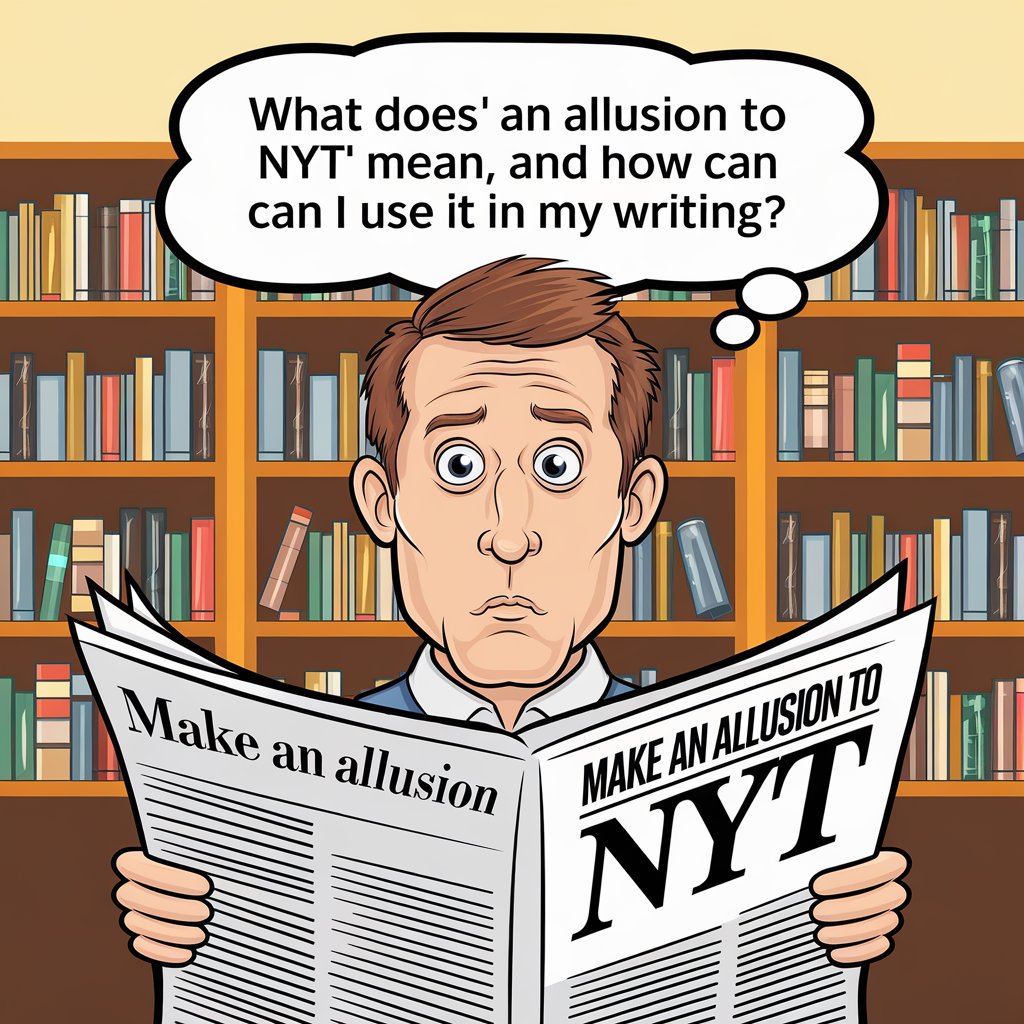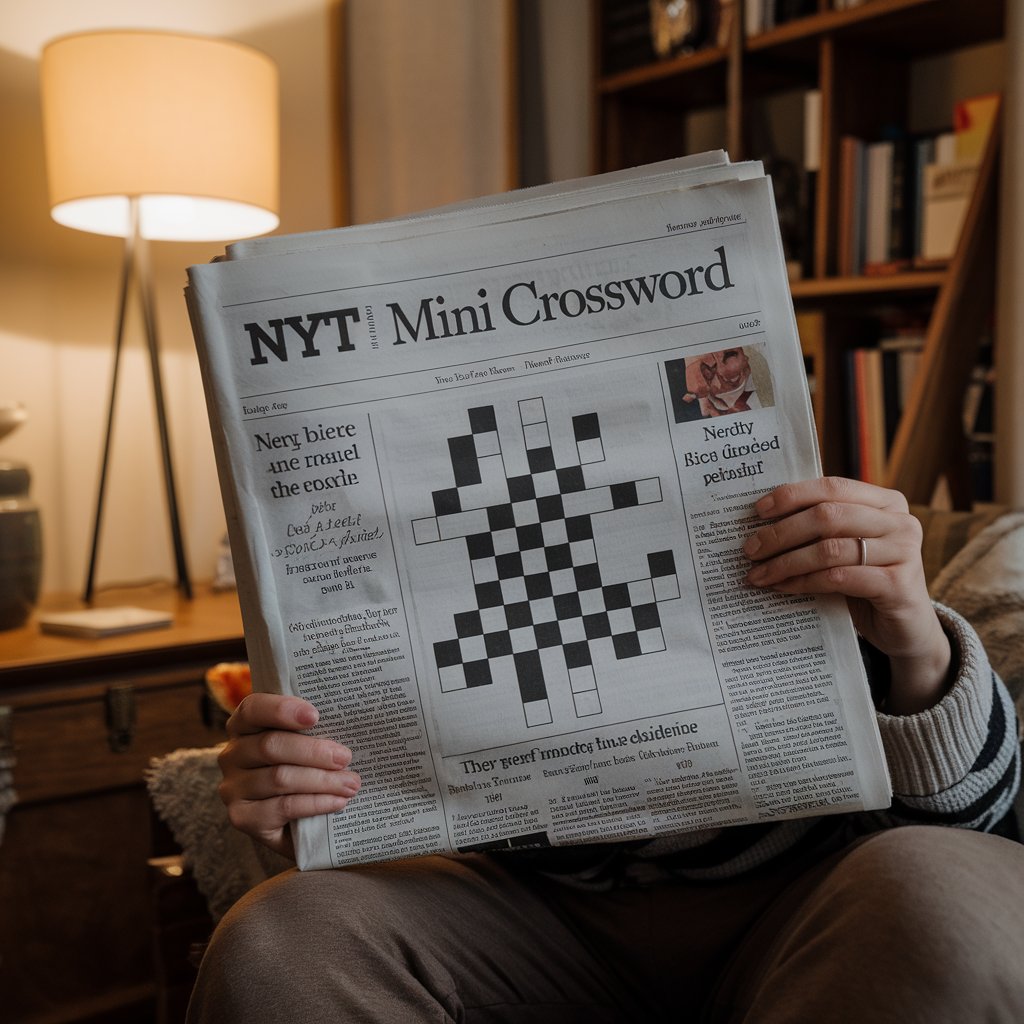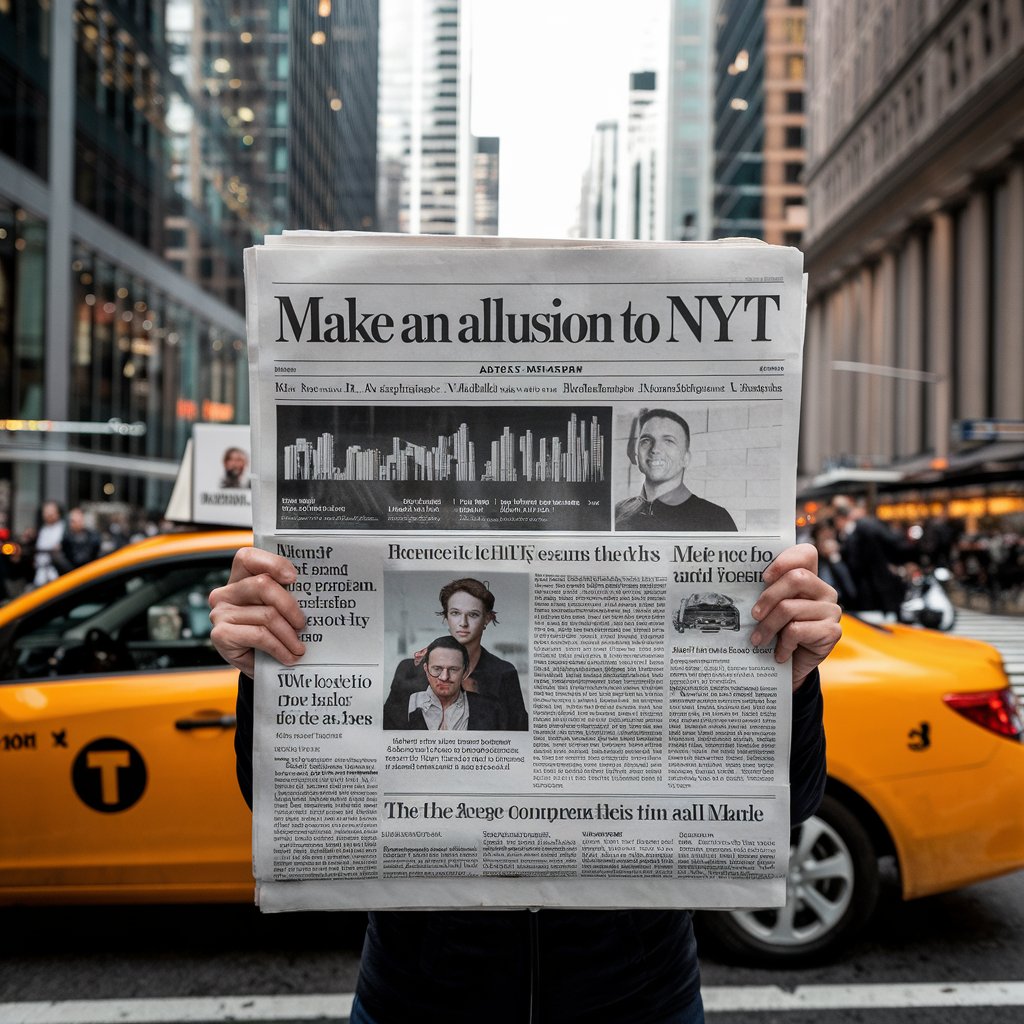Table of Contents
Make an allusion to NYT and impress your readers with smart references! Many people enjoy solving the NYT Mini Crossword, where clues like this help improve vocabulary and thinking skills. But what does “make an allusion” mean, and how can you use it in your writing?
An allusion is when you mention something indirectly, without explaining it fully. For example, saying, “He was a real Einstein in math class,” alludes to the famous scientist Albert Einstein. The NYT Mini Crossword often uses clever clues that require knowledge of history, literature, and pop culture. Let’s explore how allusions work and how you can use them in daily life!
What Does “Make an Allusion to NYT” Mean?
Making an allusion to NYT means mentioning something indirectly, just like how clues in the NYT Mini Crossword hint at something without directly saying it. This technique is often used in writing and speech to make content more engaging and meaningful.
Writers and speakers use allusions to connect ideas, making their work more interesting. For example, saying, “She has a Midas touch in business” alludes to the Greek myth of King Midas, who turned everything to gold. The NYT Mini Crossword often uses such clever hints to make solving fun.
Allusions help improve language skills and comprehension. They require background knowledge, making them an exciting challenge for those who enjoy word games and literature. Let’s dive deeper into how NYT crossword puzzles use allusions effectively.
The Power of Allusions in Writing and Speech
Allusions make writing powerful by adding layers of meaning. They help readers and listeners connect to a topic in a deeper way, making ideas more memorable and thought-provoking.
Many famous speeches and books use allusions to enhance their impact. For example, Martin Luther King Jr.’s “I Have a Dream” speech includes biblical allusions, making it even more inspiring. Similarly, writers use historical and cultural references to enrich their storytelling.
Using allusions wisely can make your writing stand out. But they should be familiar to your audience; otherwise, they might confuse rather than clarify. Next, let’s see how the NYT Mini Crossword plays with allusions to make puzzles engaging.
How the NYT Mini Crossword Uses Allusions

The NYT Mini Crossword is known for its creative clues. Many of them use allusions to challenge solvers, making the game both fun and educational.
For example, a clue might say, “Greek hero with a weak spot”—the answer would be “Achilles.” This refers to the famous myth of Achilles’ heel. By using allusions, crossword puzzles test a player’s knowledge of history, literature, and culture.
These puzzles encourage critical thinking. Each clue invites players to recall famous figures, events, or sayings, improving vocabulary and reasoning skills. Regularly solving crosswords can make you better at recognizing allusions in everyday reading and conversations.
Examples of Famous Allusions in Literature and Pop Culture
Allusions appear everywhere in books, movies, and songs. They make stories more meaningful and help audiences relate to new ideas.
- Books: George Orwell’s Animal Farm alludes to the Russian Revolution, using animals to represent real-life figures.
- Movies: Many superhero films allude to Greek mythology, like how Superman shares qualities with Hercules.
- Music: Song lyrics often reference famous events or people, making the words deeper in meaning.
Recognizing these allusions can make reading and watching media more enjoyable. They add hidden meanings that make stories richer and more interesting.
How to Recognize Allusions in NYT Crossword Clues

Spotting allusions in NYT crossword clues can be tricky but fun. Here are some tips to help:
- Look for indirect hints – The clue may not state the answer clearly but give a well-known reference.
- Think about famous names – Many clues reference historical figures, literature, or pop culture.
- Use context clues – The words around the clue can help you guess what it alludes to.
By practicing regularly, you’ll get better at recognizing and solving these clever word puzzles.
Why Writers and Speakers Use Allusions
Allusions are used to make speech and writing more engaging. They connect ideas in a smart way without needing a long explanation.
Authors use them to hint at deeper meanings in their stories. Public speakers add them to make speeches more relatable. Advertisers also use them to make their messages memorable.
When used well, allusions make content more interesting and appealing. They invite the audience to think and understand beyond the words written or spoken.
Tips for Using Allusions in Your Own Writing
Want to use allusions like a pro? Here’s how:
- Choose familiar references – Use allusions that most readers will understand.
- Make them relevant – The allusion should match the theme of your writing.
- Avoid overuse – Too many allusions can make writing confusing.
With practice, you’ll be able to make your writing more engaging with well-placed allusions.
Common Mistakes People Make with Allusions
People sometimes misuse allusions. Here are mistakes to avoid:
- Choosing obscure references – If the audience doesn’t get it, the allusion fails.
- Overcomplicating the meaning – Allusions should make ideas clearer, not harder to understand.
- Using them too often – Too many allusions can make writing seem forced or difficult.
Using allusions correctly makes writing smoother and more impactful.
How Allusions Improve Creativity and Thinking Skills
Recognizing and using allusions boosts creativity. They encourage thinking in new ways and making connections between ideas.
- Writers become better storytellers by using allusions to add depth.
- Speakers engage audiences by making their words more relatable.
- Readers improve comprehension by recognizing deeper meanings in text.
Engaging with allusions sharpens the mind and improves communication skills.
Fun Ways to Learn Allusions with NYT Crossword Puzzles
NYT crossword puzzles are a great way to practice allusions. Here’s how you can use them for learning:
- Solve puzzles regularly – The more you play, the better you recognize allusions.
- Look up tricky clues – Researching unknown allusions expands your knowledge.
- Discuss with friends – Sharing answers and insights makes learning fun.
Crossword puzzles make learning enjoyable and help improve problem-solving skills.
The Difference Between Allusions, References, and Quotes
Some people confuse allusions with references and quotes. Here’s how they differ:
- Allusions hint at something without directly stating it.
- References mention something directly.
- Quotes repeat exact words from a source.
Understanding these differences helps you use them effectively in writing and speech.
How to Make an Allusion to NYT Like a Pro!
Using allusions in daily life can be fun and effective. Here’s how to do it well:
- Read widely – The more you read, the better your allusions will be.
- Practice with puzzles – NYT crosswords are a great place to start.
- Keep it simple – Make sure your allusions are easy to understand.
With these tips, you’ll be able to use allusions like an expert, impressing your readers and listeners every time!
Conclusion
Understanding how to make an allusion to NYT can be helpful for solving crossword puzzles and improving your vocabulary. It allows you to connect words and meanings in a fun and creative way. By practicing with different clues, you can get better at recognizing allusions and references.
If you enjoy solving puzzles, keep trying new challenges and learning new words. The more you practice, the easier it will become to spot allusions in the NYT crossword and beyond. Keep exploring and have fun with words!
FAQs
Q: What does it mean to make an allusion to NYT?
A: It means referring to something indirectly in the New York Times crossword puzzle, usually by hinting at a word or idea.
Q: How can I get better at recognizing allusions in the NYT crossword?
A: You can improve by solving puzzles regularly, learning common references, and practicing word associations.
Q: Why are allusions used in crossword puzzles?
A: Allusions make puzzles more interesting and challenging by connecting clues to cultural, literary, or historical references.
Q: Where can I find NYT crossword answers?
A: You can check the official NYT Crossword website, puzzle-solving forums, or blogs that provide daily solutions.
Q: Are allusions only used in crosswords?
A: No, allusions are also used in books, movies, and conversations to make indirect references to well-known ideas or events.
